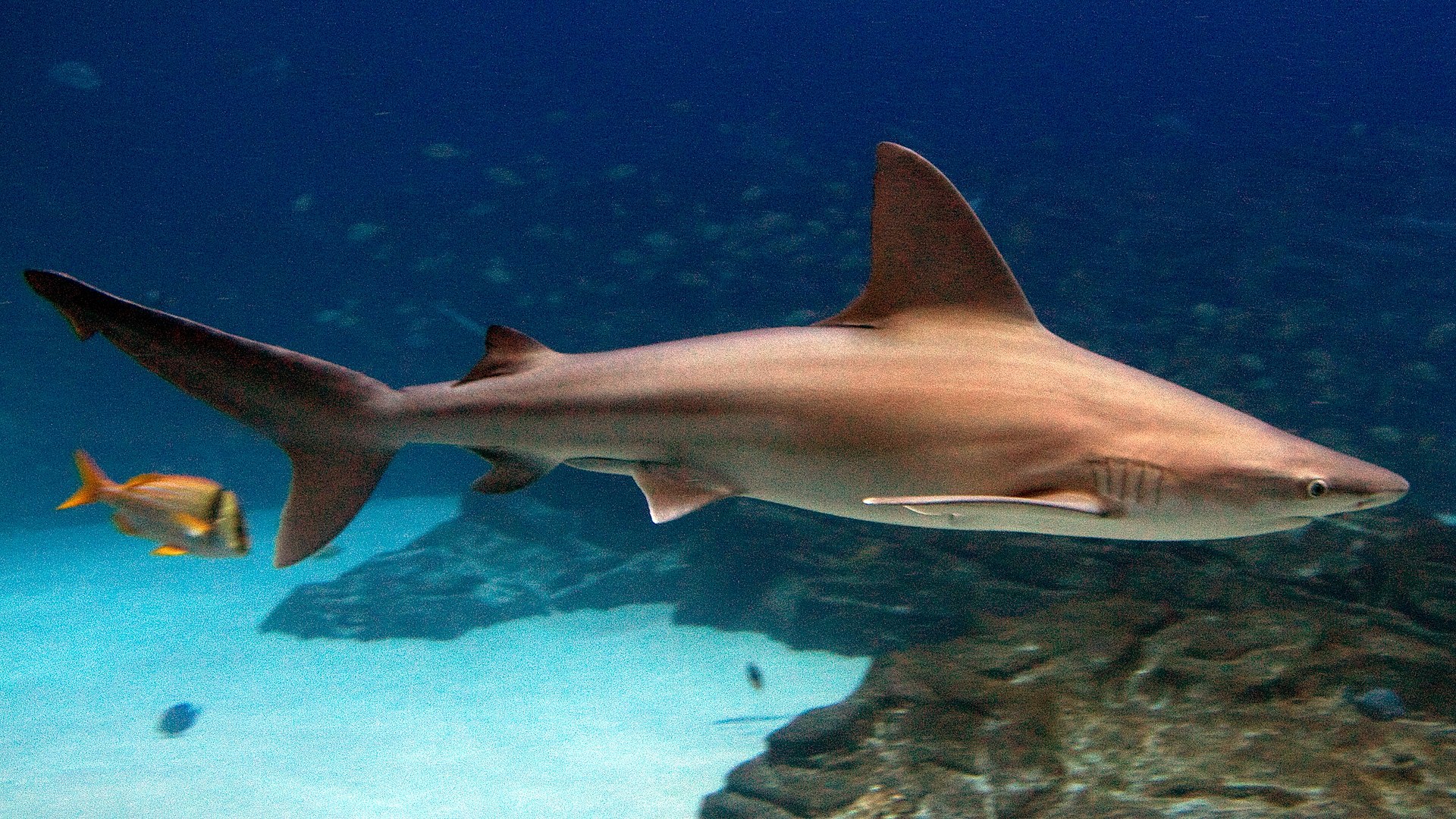
CC BY 2.0
Bull sharks are commonly found in warm, coastal areas in freshwater or saltwater. They are well known for their aggressive behavior and can be a big risk for humans since they are known for living in high density near the shoreline. Many experts consider Bull sharks to be the most dangerous shark in the world. They are among one of 3 species most likely to attack humans.

They are shorter than other sharks with a blunt nose that they occasionally use to head butt prey before attacking. They are gray on top and white below and have dark tip fins. This allows them to hunt better because prey below them see white from above masked with the light from the sun and animals above them see gray which can be hard to see blending in with the ocean floor. This is known as countershading. The bull shark is diadromous, meaning they can swim between salt and freshwater with no issues. The reason for this is due to a bottleneck effect where groups of bull sharks were separated during the last ice age. This bottleneck effect allowed bull sharks to adapt to both freshwater and saltwater. Bull sharks blood is naturally salty to allow them to live in saltwater. When moving from saltwater to freshwater where the salt levels are much lower they increase the level of osmosis in their gills to make up for the loss of sodium and chlorine. They also have a number of organs that can regulate the amount of saltwater in their body to allow them to easily live in freshwater, organs like, rectal gland, kidneys, liver, and gills. Although Bull sharks can live in freshwater it may not be advantageous for them to do so, mainly because their main source of prey is located in saltwater areas.

CC BY 2.5
Bull sharks mainly eat bony fish. However, they are not picky eaters. They will eat dolphins, turtles, stingrays, even other Bull sharks. Humans are not necessarily on their menus but they have been known to bite humans out of confusion for other prey or curiosity. They use a technique called the bump and bite attack. After the first initial contact, they continue to bite and tackle prey until they are unable to flee.
Bull sharks mate during the late summer and autumn seasons. They can have anywhere from 1-13 live young after gestating for 12 months. Gestation is the process of the development of a fetus inside the body of viviparous animals.
